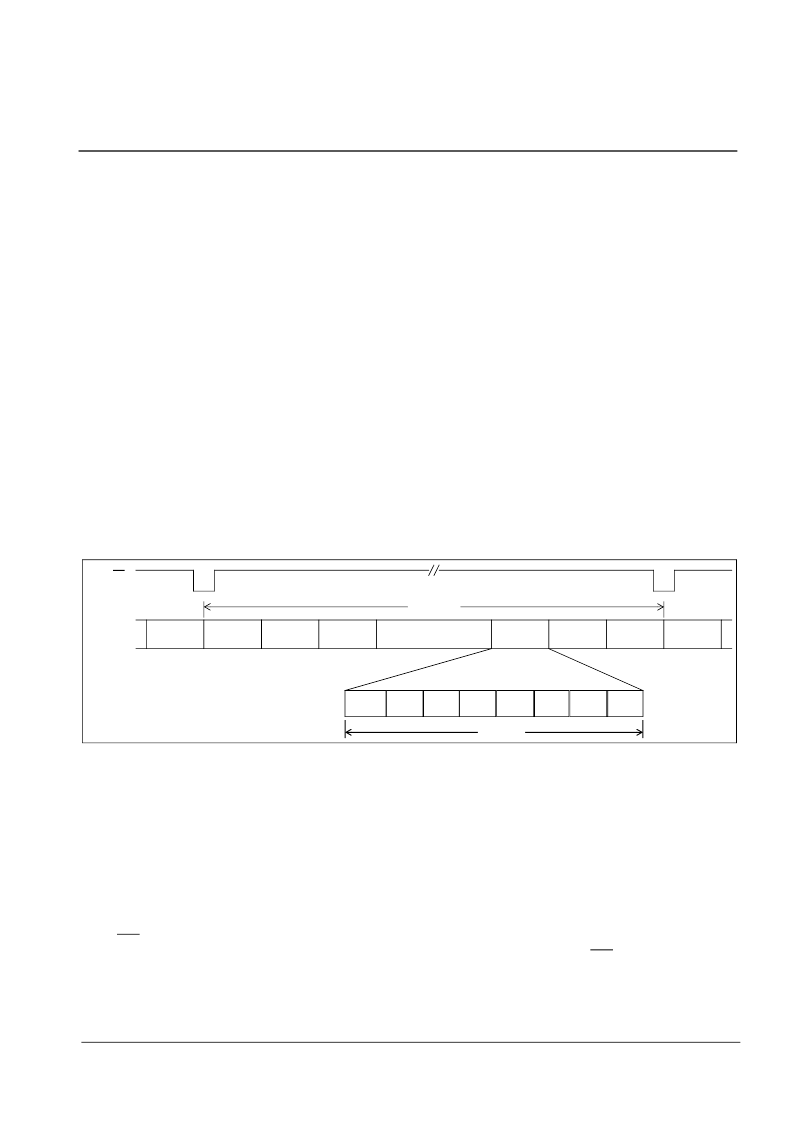- 您現(xiàn)在的位置:買賣IC網(wǎng) > PDF目錄359235 > MT9171AE1 (ZARLINK SEMICONDUCTOR INC) Digital Subscriber Interface Circuit Digital Network Interface Circuit PDF資料下載
參數(shù)資料
| 型號(hào): | MT9171AE1 |
| 廠商: | ZARLINK SEMICONDUCTOR INC |
| 元件分類: | 數(shù)字傳輸電路 |
| 英文描述: | Digital Subscriber Interface Circuit Digital Network Interface Circuit |
| 中文描述: | DATACOM, DIGITAL SLIC, PDIP22 |
| 封裝: | LEAD FREE, PLASTIC, DIP-22 |
| 文件頁(yè)數(shù): | 10/28頁(yè) |
| 文件大?。?/td> | 552K |
| 代理商: | MT9171AE1 |
第1頁(yè)第2頁(yè)第3頁(yè)第4頁(yè)第5頁(yè)第6頁(yè)第7頁(yè)第8頁(yè)第9頁(yè)當(dāng)前第10頁(yè)第11頁(yè)第12頁(yè)第13頁(yè)第14頁(yè)第15頁(yè)第16頁(yè)第17頁(yè)第18頁(yè)第19頁(yè)第20頁(yè)第21頁(yè)第22頁(yè)第23頁(yè)第24頁(yè)第25頁(yè)第26頁(yè)第27頁(yè)第28頁(yè)

MT9171/72
Data Sheet
10
Zarlink Semiconductor Inc.
In MOD mode, DUAL port operation must be used and the D, B1 and B2 channel designations no longer exist. The
selection of SLV or MAS will determine which of the DNICs is using the externally supplied clock and which is
phase locking to the data on the line. Due to jitter and end to end delay, one end must be the master to generate all
the timing for the link and the other must extract the timing from the receive data and synchronize itself to this timing
in order to recover the synchronous data. DUAL port mode allows the user to use two separate serial busses: the
DV port for PCM/data (B channels) and the CD port for control and signalling information (C and D channels). In the
SINGL port mode, all four channels are concatenated into one serial stream and input to the DNIC via the DV port.
The order of the C and D channels may be changed only in DN/DUAL mode. The DNIC may be configured to
transfer the D-channel in channel 0 and the C-channel in channel 16 or vice versa. One other feature exists; ODE,
where both the DV and CD ports are tristated in order that no devices are damaged due to excessive loading while
all DNICs are in a random state on power up in a daisy chain arrangement.
DV Port (DSTi/Di, DSTo/Do)
The DV port transfers data or PCM encoded voice to and from the line according to the particular mode selected by
the mode select pins. The modes affecting the configuration of the DV port are MOD or DN and DUAL or SINGL. In
DN mode the DV port operates as an ST-BUS at 2.048 Mbit/s with 32, 8 bit channels per frame as shown in Figure
9. In this mode the DV port channel configuration depends upon whether DUAL or SINGL port is selected. When
DUAL port mode is used, the C and D channels are passed through the CD port and the B1 and B2 channels are
passed through the DV port. At 80 kbit/s only one channel of the available 32 at the DV port is utilized, this being
channel 0 which carries the B1-channel. This is shown in
Figure 3. At 160 kbit/s, two channels are used, these
being 0 and 16 carrying the B1 and B2 channels, respectively. This is shown in Figure 4. When SINGL port mode is
used, channels B1, B2, C and D are all passed via the DV port and the CD port is disabled. See CD port description
for an explanation of the C and D channels.
Figure 9 - ST-BUS Format
The D-channel is always passed during channel time 0 followed by the C and B1 channels in channel times 1 and
2, respectively for 80 kbit/s. See Figure 5. For 160 kbit/s the B2 channel is added and occupies channel time 3 of
the DV port. See Figure 6. For all of the various configurations the bit orders are shown by the respective diagram.
In MOD mode the DV and CD ports no longer operate at 2.048 Mbits/s but are continuous serial bit streams
operating at the bit rate selected of 80 or 160 kbit/s.
While in the MOD mode only DUAL port operation can be used.
In order for more than one DNIC to be connected to any one DV and CD port, making more efficient use of the
busses, the DSTo and CDSTo outputs are put into high impedance during the inactive channel times of the DNIC.
This allows additional DNICs to be cascaded onto the same DV and CD ports. When used in this way a signal
called F0o is used as an indication to the next DNIC in a daisy chain that its channel time is now active. Only the
first DNIC in the chain receives the system frame pulse and all others receive the F0o from its predecessor
in the chain. This allows up to 16 DNICs to be cascaded.
Channel
0
Channel
1
Channel
2
Bit 7
Bit 6
Bit 5
Bit 4
Bit 3
Bit 2
Bit 1
Bit 0
125
μ
sec
Channel
31
Channel
30
Channel
31
Channel
0
Channel
29
F0
ST-BUS
Most
Significant
Bit (First)
Least
Significant
Bit (Last)
3.9
μ
sec
相關(guān)PDF資料 |
PDF描述 |
|---|---|
| MT9171 | ISO2-CMOS ST-BUS FAMILY |
| MT9171AE | ISO2-CMOS ST-BUS FAMILY |
| MT9171AN | ISO2-CMOS ST-BUS FAMILY |
| MT9171AP | ISO2-CMOS ST-BUS FAMILY |
| MT9171 | ISO2-CMOS ST-BUS⑩ FAMILY Digital Subscriber Interface Circuit Digital Network Interface Circuit |
相關(guān)代理商/技術(shù)參數(shù) |
參數(shù)描述 |
|---|---|
| MT9171AN | 制造商:Microsemi Corporation 功能描述: |
| MT9171AN1 | 制造商:Zarlink Semiconductor Inc 功能描述:PB FREE DNIC 1.5UM - Rail/Tube |
| MT9171ANR | 制造商:ZARLINK 制造商全稱:Zarlink Semiconductor Inc 功能描述:Digital Subscriber Interface Circuit Digital Network Interface Circuit |
| MT9171ANR1 | 制造商:Microsemi Corporation 功能描述:PB FREE DNIC 1.5MM - Tape and Reel 制造商:Zarlink Semiconductor Inc 功能描述:PB FREE DNIC 1.5MM - Tape and Reel |
| MT9171AP | 制造商:ZARLINK 制造商全稱:Zarlink Semiconductor Inc 功能描述:ISO2-CMOS ST-BUS FAMILY |
發(fā)布緊急采購(gòu),3分鐘左右您將得到回復(fù)。